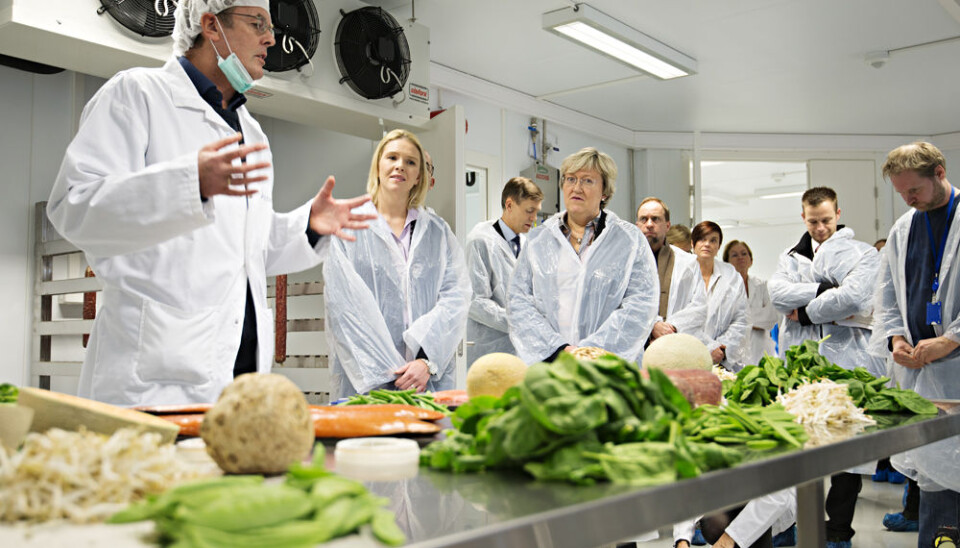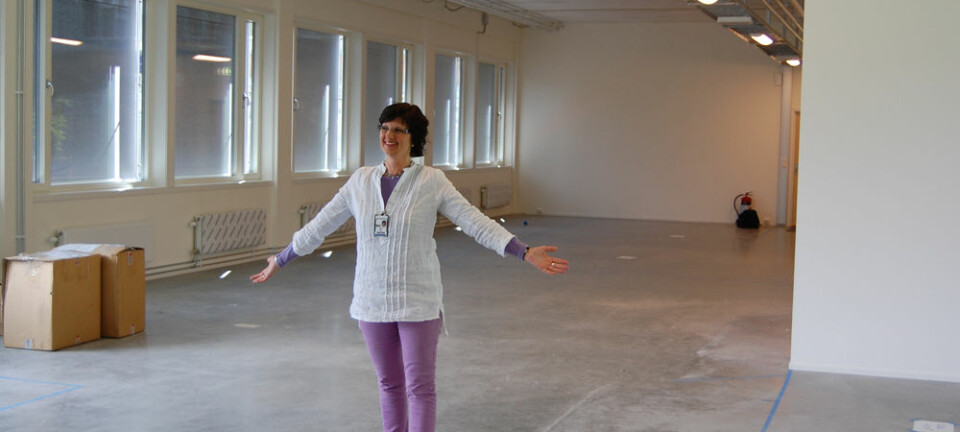This article was produced and financed by Nofima The Norwegian Institute of Food, Fisheries and Aquaculture Research

Cooking up dangerous food
Scientists are making food with life-threatening bacteria in a pathogen pilot plant in Norway,
Denne artikkelen er over ti år gammel og kan inneholde utdatert informasjon.
The most recent figures from the EU show that 5,648 outbreaks of food-borne diseases were recorded in 2011. Nearly 70,000 people fell ill, over 7,000 required hospital treatment, and 93 died as a result of food poisoning.
The figures from the US are much higher. Research figures from 2012 show that as many as 48 million people in America fell ill every year from a total of 31 identified disease-producing bacteria in food. In addition to the human suffering, the extra costs each year for sick leave have been calculated at just over USD 77 billion.
In 2012, the Norwegian Institute of Public Health received reports of 430 cases (out of a population of about 5 million) in which people had fallen ill as a result of bacteria in food.
The Institute believes, however, that the correct figure for how many people in Norway falling ill every year as a consequence of microbes in food is much higher, since many cases are not reported.
Globalisation
A greater degree of globalisation means that foods, both in the form of raw materials and as prepared products, cross national borders to a higher degree. Decision-makers, scientists and the food industry must, for this reason, continue to collaborate to ensure that consumers receive safe food.
A pathogen pilot plant in Norway provides possibilities for the food industry with research based knowledge to ensure safe food to the consumers.
“The food pilot plant can save lives,” stated the Norwegian Minister of Agriculture and Food Sylvi Listhaug when she opened the new pathogen pilot plant research facility in Desember last year.
Scientists can study life-threatening bacteria such as Listeria monocytogenes and pathogenic E. coli. In a realistic production environment, in a Biohazard level 3 facility, they aim to gain knowledge about how to prevent their growth and survival in food .
It will be possible for the scientists to produce and package various types of food deliberately contaminated with pathogenic bacteria in order to investigate the fate of such bacteria under different production conditions.
In addition, they will develop methods that ensure food safety.
Contaminated morrpølse
“It started with an idea about 15 years ago. We realised that there was a great need in both the industrial world and in the sphere of research and education to establish a facility in which disease-producing bacteria could be studied during the production of food,” says Helga Næs, research director for Food Quality and Safety at the food research institute Nofima in Norway.
The pathogen laboratory at Nofima was rebuilt in 2005 and upgraded to a “minifactory” for the production of cured sausage.
Following an outbreak of enterohemorrhagic E. coli in a type of cured sausage known as morrpølse in 2006, a research project was started in the minifactory. Its purpose was to study the effects of changes to the recipe and processing steps in order to reduce the risk of dangerous E. coli in dry fermented sausage.
The scientists discovered, among other things, that a gentle heat treatment of the sausages (at 43 °C) for 24 hours increased food safety.
The pathogen pilot plant has been specially designed with respect to air pressure and decontamination, waste water treatment and the destruction of other waste in order to prevent the spread of infectious material to the surroundings.



































